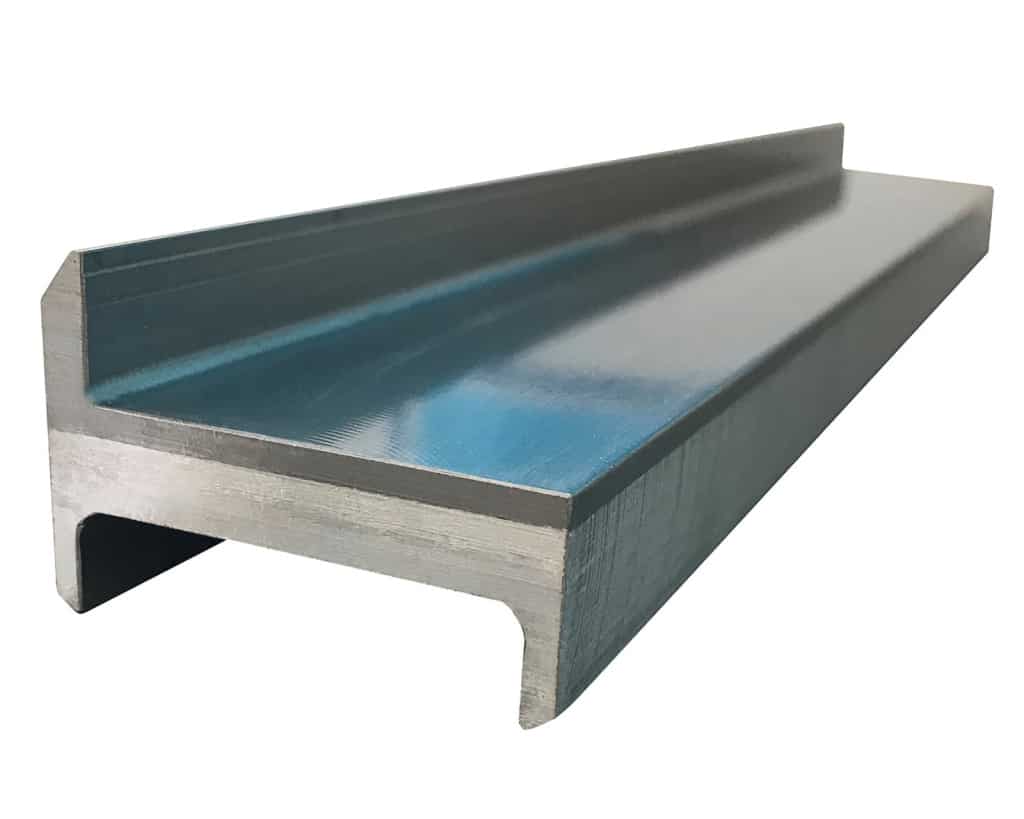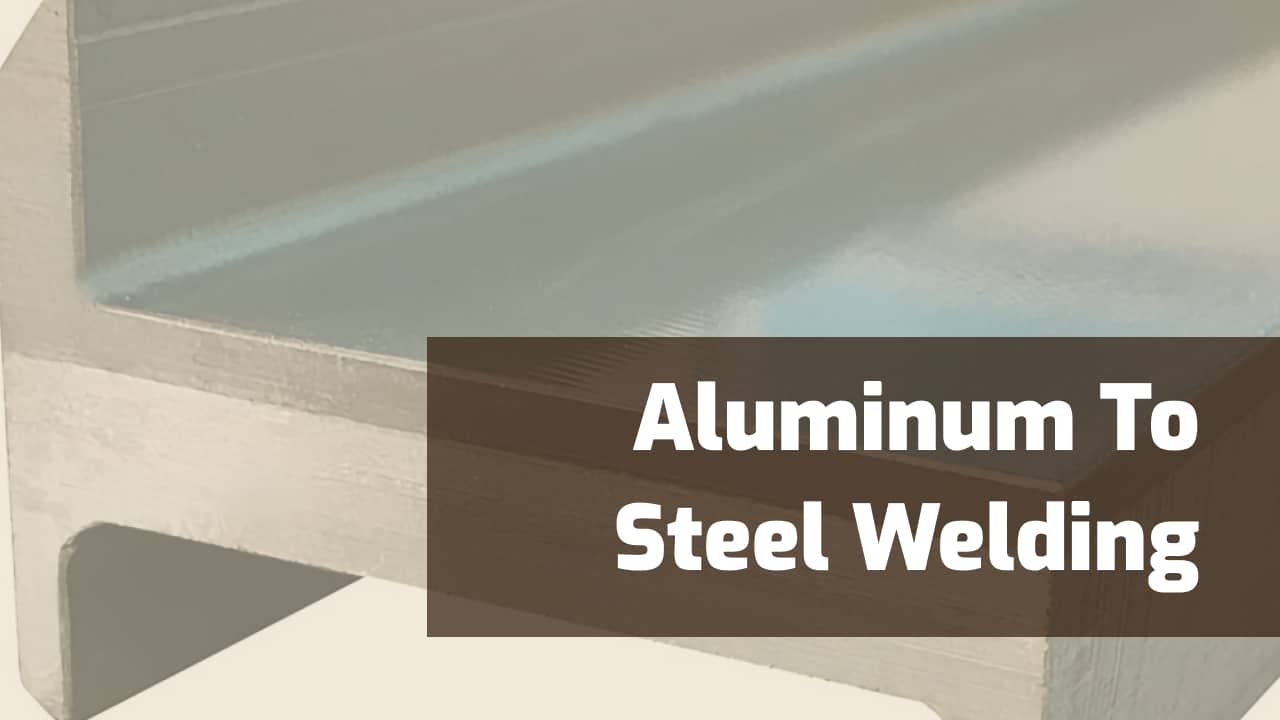Whether or not you can weld aluminum to steel is a common question from those learning to weld. While it might initially seem that you can’t weld aluminum and steel together, it is actually possible in some cases.
The main problem with doing so is that there is not a strong enough bond between the two metals, which is the whole purpose of welding them together.
With advancements in filler materials, it is possible to bond the two metals, but you are likely better off choosing a different fastening method altogether.
In addition, several innovations have made it possible to weld steel and aluminum together.
Remember that there is no easy way to structurally weld steel and aluminum together, especially for someone welding as a hobby.
Why is it Challenging to Weld Aluminium to Steel?
A few problems make it very difficult to weld steel and aluminum. However, the biggest problem is the chemical makeup of each metal.
Each metal has unique properties that make welding it to other metals difficult, which is true of other metals beyond steel and aluminum.
Heat Differences
The one thing that all welds need, regardless of method, is heat. It takes heat to melt the metal into a liquid so it can then bond together. However, if you’ve tried welding aluminum, you know how difficult it can be.
The reason is that aluminum dissipates heat much more effectively than steel. This is great for some uses, but it makes heating to the point of becoming molten very difficult and, in some situations, even requires pre-heating.
Since aluminum requires so much heat to combat the loss, it needs substantially more than steel. This alone would make welding steel and aluminum nearly impossible to weld, but you must also consider material shrinkage from all that heat.
Again, aluminum and steel are very different and will heat and cool at different rates. As the two metals cool, they will shrink at different rates, which can cause the welds to crack.
This doesn’t happen when combining like metals because they cool and shrink at the same speed. In addition, the bond between steel and aluminum will not be strong, which will only worsen problems with cracking.
| Material property | Aluminum | Steel |
|---|---|---|
| Melting temperature (Who will melt first?) | 660 °C (1220 °F) | 1370 to 2500 °C (2500 to 4500 °F) |
| Thermal conductivity (How easily do they heat up?) | ~ 240 W/m°C | ~ 54 W/m°C |
| Solubility (Do they mix?) | Virtually insoluble. When melted, both react to form brittle compounds resulting in fragile joints. | |
Finding a Filler Material
Another problem with welding steel to aluminum is choosing what filler material to use. While some newer compounds are out, most still don’t successfully bond the two metals together.
It’s difficult to achieve because steel and aluminum repel each other to an extent rather than bond.
Most consumables designed for this purpose are usually better at either steel or aluminum and typically fail to combine the two metals meaningfully.
One of the few exceptions is Aluma Steel which works in a two-part process on TIG or MIG welders.
What happens if you try to weld steel to aluminum
If you try to weld steel to aluminum with traditional methods, you’ll get poor adhesion, and the metals will not bond. Of course, that’s assuming you have a powerful enough welder and can get both metals to melt in the first place.
The next problem is that most welding rods and wires are designed for bonding a specific type of metal. Therefore, even filler materials designed for welding dissimilar metals will struggle to create a strong bond.
An easy way to test this is to try to weld a piece of steel and aluminum. If you can lay a secure bead, try prying it apart. It should come apart very easily, with most of the weld sticking to either the aluminum or the steel, depending on the filler material used.
If you want to weld aluminum and steel successfully, use a specialty filler material designed for welding dissimilar metals. These usually require making two welds with different filler materials, which takes time and effort.
A Potentially Bigger Problem
While welding aluminum and steel is already next to impossible, another problem awaits those who do try to join these metals.
Galvanic corrosion results from an electrolytic process caused by different electric potentials between different metals.
In the case of steel and aluminum, the steel acts as a cathode while the aluminum acts as an anode. Eventually, this will lead to a breakdown of the anode; however, the process is hastened by certain conditions.
For instance, a galvanic reaction can quickly happen when the metals are exposed to salt water.
How do you Join Aluminium with Steel?
Just because you can’t weld steel and aluminum doesn’t mean joining the two materials is impossible.
There are several ways to attach steel and aluminum that may actually serve you better than welding.
The 5 Main Methods of Joining Aluminum to Steel
The main methods of joining these two metals are mechanical fasteners, adhesives, brazing, hot dip aluminizing, or bimetallic transitions.
Let’s break them down…
1. Mechanical Fasteners
Mechanical fasteners such as screens, bolts, and rivets are arguably the best option to join two dissimilar metals.
You can choose to use screws or bolts that are easy to remove or rivets that serve as a more permanent solution.
More importantly, you can paint the two surfaces separately before joining them, preventing galvanic corrosion.
2. Adhesives
The next option is using an adhesive such as JB Weld. Although much debate surrounds the effectiveness of adhesives and epoxies used to join metal, they will do the trick for most lightweight jobs.
When using adhesives, read the instructions carefully and prepare the metal exactly as the instructions require to get a firm hold.
3. Brazing
Brazing is similar to welding in that it uses heat and filler material, but the difference is that the base metal is not melted when brazing. Because the base materials do not melt and fuse together, it is possible to braze dissimilar metals.
You will need a torch setup and brazing rods to braze steel and aluminum. The brazing process is the same as soldering, sometimes called metal soldering. Getting good at and achieving a structural joint can take a lot of practice.
5. Hot Dip Aluminizing
Another method to weld aluminum to steel is to coat the steel part with a material that enables aluminum arc welding. This process is called hot dip aluminizing and involves submerging the steel part into molten aluminum.
In general, dip coating is more flexible than using bimetallic inserts since dip coating can conform to most geometries.
The result will be a low-resistance weld between the aluminum part and the aluminum coating of the steel part; However, this can be difficult for inexperienced welders because of the delicacy of the process, especially when dealing with strict geometric requirements or sensible structures.
5. Bimetallic Transitions

A bimetallic transition is one last way to connect dissimilar metals, such as aluminum and steel. These are usually found in the pipe and shipbuilding industries.
The two metals are bonded in a factory to allow an easy joint between different materials on a job site.
Pros & Cons of Each Method
To summarize the different processes of joining aluminum and steel, here’s a table:
| Process | Advantages | Disadvantages |
|---|---|---|
| Fasteners | Easy and cheap | Galvanic corrosion can occur if not insulated |
| Adhesives | Easy and cheap | Won’t give you a particularly strong joint. |
| Brazing | Relatively cheap and accessible for most people | Takes a lot of practice to achieve a structural joint |
| Hot dip aluminizing | Known technique | Only for small pieces with low resistance or for sealing purposes. |
| Bimetallic transitions | Excellent quality | Expensive. Almost impossible to obtain if you are a small shop or a hobbyist. |
Quick FAQs
Can You MIG Weld Aluminum To Steel?
The only way to MIG weld aluminum to steel is with Aluma Steel MIG wire. It is a unique blend of filler material designed for relatively light use.
Unfortunately, the wire requires two passes for maximum strength, meaning you will have to run a bead and swap spools if you don’t have a spare MIG welder just lying around.
Can You TIG Weld Aluminum To Steel
TIG welding aluminum to steel comes with many problems that MIG welding faces. Plus, there is the fact that TIG welding is a much more complicated process, and welders are much more expensive.
However, Aluma Steel has TIG rods designed for welding steel to aluminum. Just like with MIG, the process requires multiple steps depending on the level of strength needed.
Can You Weld Aluminum To Stainless Steel?
Stainless steel differs significantly from carbon steel, making welding much more difficult. In some cases, it can seem like stainless steel has quite a bit more in common with aluminum. However, this is not the case.
It is just as impractical to weld stainless steel to aluminum as it would be to weld carbon steel to aluminum.
Final words
Welding aluminum to steel requires a different approach than welding a singular metal like aluminum.
Whether using bolts or adhesives, mechanical fastening is the easiest, cheapest, and fastest way to join dissimilar materials like aluminum and steel.
Bimetallic inserts are the best way to ensure seamless and durable welds. On the other hand, an aluminum coating will give you a low-resistance bond that’s cheaper and easier to do.
I encourage you to ask yourself two questions when considering steel-aluminum welding:
- What is the purpose of the joint?
- What other material could work for the existing thermal, corrosion, and resistance requirements?
Keep in mind this article when facing the need to join steel and aluminum, and please remember that not all aluminum alloys and steels have the same weldability.
If you need a different method than the methods discussed for your application, you can still make a quick trip to the hardware store for bolts and nuts to join aluminum and steel.
